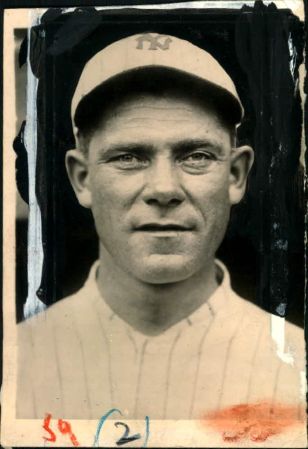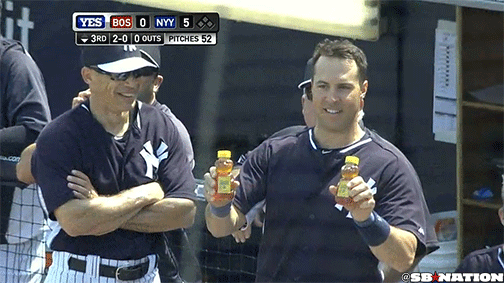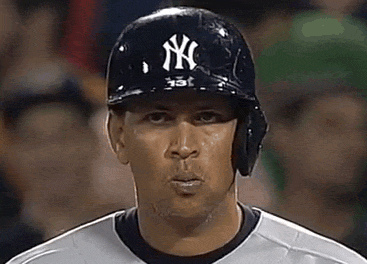![]()
One of the last spitballers was also the only former "Highlander" to later play in a World Series with the Yankees.
Name: Jack Quinn
Position: Starting pitcher
Born: July 1, 1883 (Stefurov, Slovakia)
Died: April 17, 1946 (Pottsville, PA)
Yankee Years: 1909-12, 1919-21
Primary number: N/A
Yankee statistics: 81-65, 3.15 ERA, 2.89 FIP, 228 G, 145 GS, 1,270 IP, 478 K, 83 CG, 6 SHO, 94 ERA-, 89 FIP-, 14.0 rWAR, 19.6 fWAR
Biography
Longevity is occasionally an underrated quality in a ballplayer. Sometimes, pitchers can be extremely valuable in a short period of time, as pitchers like Sandy Koufax and Johan Santana can attest. However, there is definitely value in staying productive for quite a long time, even if it's not in a Hall of Fame caliber career. Jack Quinn is a fine example of someone who managed to put together a fine MLB career through such consistency.
Quinn was his generation's Jamie Moyer, pitching well after his 40th birthday. The spitballer got his start in New York, and he would become the one player who survived the craters of the Highlander years to resurface when the Yankees at last won their first American League pennant.
Unclear upbringing
The first 20 years or so of Quinn's life is absolutely fascinating. He enjoyed keeping his past shrouded in mystery, and over the years, there was a tremendous amount of speculation as to where he was from. Was he Welsh? Polish? Irish? Native American? Greek? French? Russian? All were suggested as possibilities during his life, but the now-widely accepted conclusion is that he was born on July 1, 1883 in Stefurov, Austria-Hungary (present-day Slovakia). Quinn was unsurprisingly not his birth name; it was Johannes Pajkos.
When Quinn was less than a year old, his parents Michael and Maria immigrated to the United States on the SS Suevia. Sadly, his mother did not survive long after the trip and Quinn never knew her. Michael brought his son to Hazleton, Pennsylvania, where he made ends meet as a coal miner while Slovak friends and later his second wife, Anastasia, helped raise Quinn. Around this time, Pajkos anglicized his name to Picus, so his son changed from Johannes Pajkos to John Picus. The "Quinn" was added to further catch potential scouts' attention.
Growing up in poverty meant that Quinn could not have much schooling, and he began helping his father in the mines at the meager age of 12. The taste of coal dust was dreadful, and Quinn was far from the only young man who dreamed of escaping the mines through baseball. He had come to know the game through community activities with other immigrants; he would often work early shifts so that he would have time to play baseball with his friends.
After an unusual childhood that even saw him ride a freight train to Montana and back looking for work, Quinn began pitching in 1900 for a semi-pro team in Dunbar, about an hour outside of Pittsburgh. Quinn honed his skills for several years with a few different Pennsylvania teams before getting a chance to break in with a legitimate minor league team. The Macon Brigands of the South Atlantic League signed him up at age 23 in 1907. Quinn rewarded his manager, Perry Lipe, by recording a 2.35 ERA and 1.025 WHIP in 107 1/3 innings.
Having impressed in his first professional season, Quinn next spent time with the Toledo Mud Hens and the Richmond Colts. Quinn was outstanding, particularly with Richmond, where he notched a perfect 14-0 record, a 1.10 ERA, and a 0.832 WHIP in 16 starts. Quinn even added a no-hitter in there. One of the opposing player-managers in the league was Al Orth, from the Lynchburg team. Orth had been a fine pitcher in his own right with the New York Highlanders, and was good enough to land the #82 spot on this list. Orth let his old team know that the young pitcher was definitely worth their interest, and so the Highlanders drafted Quinn from Richmond that September. The major leagues beckoned.
Tumultuous twenties
Much like the aforementioned Moyer, it took Quinn awhile to truly break out in the pros. Quinn's debut seasons were just fine as he pitched well above league average in 1909 and 1910, making 42 starts and pitching 354 1/3 innings between the two seasons, posting a 2.24 ERA and 2.51 FIP. He had remarkable control over his spitball, a challenge which he was happy to master:
"I didn’t take up the spitter because I especially like it although I learned to like it later. My fingers were so short I couldn’t get a grip on the ball well enough to throw an effective curve. With a fast ball and a spitter, however, I have developed a control that I think will rank as good as anybody’s in this circuit. If you bother to look up the records, you’ll find that I give up fewer bases on balls, year after year, in proportion to the amount of work I do, than almost any hurler in the league." - Quinn, as told to F. C. Lane in Baseball Magazine, September 1930, cited in Charles Faber, SABR.
Unfortunately, the early success did not last for Quinn, who was only okay in 1911 and even worse in 1912 for a Highlanders team that finished dead last and lost 102 games. Quinn was farmed out to the Rochester Hurlers of the International League during the 1912 campaign and though he pitched better there both in '12 and 1913, he struggled to find consistency at the major league level.
The NL's Boston Braves purchased him late in the '13 season, and he did pitch to a 2.40 ERA down the stretch. He was one of many players to jump from the established two leagues to the new third major league, the Federal League, and with the Baltimore Terrapins in 1914, he went 26-14 with a 128 ERA+ in a career-high 342 2/3 innings. The next year though, he fell backward to 9-22 record and a 93 ERA+, then found himself out of a job when the Federal League folded.
Unable to catch on with a major league club, Quinn headed out west to the well-regarded Pacific Coast League. He pitched well for the Vernon Tigers over the course of three years, but his career still appeared to be at a crossroads. At the time of his 35th birthday, he hadn't pitched above the minors in almost three years, and his major league resume included just seven up-and-down seasons with league average pitching (103 ERA+). No one could have predicted that he would amazingly end up throwing 16 more seasons in the majors.
Resurgence
Quinn's time in Vernon was not in vain. Chicago White Sox owner Charles Comiskey liked what he had done and signed him to pitch six games down the stretch in 1918. In the off-season however, a dispute over who had the right to Quinn's services emerged. The Yankees had gone directly to the Vernon club to negotiate for him whereas the White Sox had first sought permission from the National Commission, which governed the game prior to the establishment of a sole commissioner. AL president Ban Johnson intervened and said that the Yankees were entitled to Quinn. His decision was one of many that led to Johnson's ouster from the game, as Comiskey never forgave him for the slight.
Both the Yankees and Quinn saw their futures at last get on track, as under Miller Huggins, the Yankees finished third in 1919 and Quinn excelled. He entrenched himself in the Yankees' rotation with a 2.61 ERA and 2.95 FIP in 266 innings and 18 complete games. The following year with the incomparable Babe Ruth now in tow, the Yankees came even closer to the top with 95 wins. It was a tight pennant race from which the Cleveland Indians eventually emerged victorious, but the blame could hardly be rested on Quinn. The spitball was now illegal, but he was allowed to continue throwing the pitch since he was grandfathered into the post-spitball era. His control remained precise with a league-best 1.7 BB/9, and he threw 253 1/3 innings of 120 ERA+ ball.
At last in 1921, the Yankees reached the top, winning the first AL pennant in franchise history. It was a bit of an off-year for Quinn as he split time between the bullpen and the rotation, but he still had a fine 111 ERA+ in 119 innings. For the first time in his career, the 38-year-old was going to the World Series. Alas, the '21 campaign would not include the Yankees' first championship, as they fell in the best-of-nine series five games to three. In his one game relieving a battered Bob Shawkey, Quinn also struggled.
The loss was deflating, but Quinn would get another chance at the title. It would not come with the Yankees, however. Leery of his advanced age, GM Ed Barrow dealt him to the Red Sox as part of a package in the off-season for a few players who would go on to help the Yankees win that elusive title: Joe Bush, Sam Jones, and shortstop Everett Scott.
Oldest player to...
The parting of ways worked out for both sides. Quinn defied his critics by pitching well despite playing around some awful Red Sox teams for a few years (he had a 115 ERA+ over four years at Fenway Park). At age 42, the old architect of the Philadelphia Athletics, Connie Mack, decided to add Quinn to his club in 1926. It turned out the long-toothed spitballer still had some pitches left in his right arm. He recorded a 3.51 ERA and 121 ERA+ for Mack over five and a half seasons in Philly, winning that hard-fought World Series ring in 1929 with an amazing team powered by Jimmie Foxx and Lefty Grove. He was the oldest man to ever start a World Series game when he took the mound in Game 4.
The A's repeated in 1930 to get Quinn his second ring, and Quinn moved on to the National League for three more seasons. Now a reliever, he helped pioneer the closer's role by specializing in finishing off games for starters who couldn't quite finish the job. He led the NL in games finished and saves (not yet an official stat) for two years in a row from '31 to '32, finishing 61 total games and notching 22 saves. Quinn's unusual 23-year career came to a close in 1933 with the Reds. He was the second-to-last legal spitballer in the majors. A little more than a decade after throwing his last major league pitch, Quinn passed away due to liver disease at age 62.
Quinn was still pitching after his 50th birthday. For 80 years, he held the record for oldest man to win a major league game, before Moyer passed him in 2012. Hell, for over 70 years, he oddly held the record for the oldest man to ever homer in the majors until the similarly ageless Julio Franco came along. If that's not a remarkable career, then I don't know what else would be. Quinn's career was a comeback story, yet one forgotten by most Yankees fans. His longevity should be remembered though, so here's to Quinn and a fascinating career.
Andrew's rank: 75
Tanya's rank: 69
Community rank: 81.5
WAR rank: 81
Season Stats
| Year | Age | Tm | W | L | ERA | FIP | G | GS | CG | SHO | IP | H | R | ER | HR | BB | SO | HBP | WP | ERA- | FIP- | rWAR | fWAR |
| 1909 | 25 | NYY | 9 | 5 | 1.97 | 2.43 | 23 | 11 | 8 | 0 | 118.2 | 110 | 45 | 26 | 1 | 24 | 36 | 4 | 2 | 76 | 96 | 1.7 | 1.2 |
| 1910 | 26 | NYY | 18 | 12 | 2.37 | 2.55 | 35 | 31 | 20 | 0 | 235.2 | 214 | 88 | 62 | 2 | 58 | 82 | 6 | 4 | 90 | 94 | 3.8 | 3.2 |
| 1911 | 27 | NYY | 8 | 10 | 3.76 | 2.88 | 40 | 16 | 7 | 0 | 174.2 | 203 | 111 | 73 | 2 | 41 | 71 | 4 | 2 | 108 | 87 | 0.4 | 2.7 |
| 1912 | 28 | NYY | 5 | 7 | 5.79 | 3.23 | 18 | 11 | 7 | 0 | 102.2 | 139 | 89 | 66 | 4 | 23 | 47 | 4 | 3 | 166 | 95 | -1.4 | 1.2 |
| | | | | | | | | | | | | | | | | | | | | | | |
| 1919 | 35 | NYY | 15 | 14 | 2.61 | 2.95 | 38 | 31 | 18 | 4 | 266 | 242 | 96 | 77 | 8 | 65 | 97 | 6 | 5 | 80 | 92 | 3.7 | 4.1 |
| 1920 | 36 | NYY | 18 | 10 | 3.2 | 2.95 | 41 | 32 | 17 | 2 | 253.1 | 271 | 110 | 90 | 8 | 48 | 101 | 2 | 5 | 85 | 82 | 4.5 | 5.4 |
| 1921 | 37 | NYY | 8 | 7 | 3.78 | 3.51 | 33 | 13 | 6 | 0 | 119 | 158 | 61 | 50 | 2 | 32 | 44 | 5 | 2 | 89 | 85 | 1.3 | 1.8 |
| NYY (7 yrs) | 81 | 65 | 3.15 | 2.89 | 228 | 145 | 83 | 6 | 1270 | 1337 | 600 | 444 | 27 | 291 | 478 | 31 | 23 | 94 | 89 | 14 | 19.6 |
Stats from Baseball-Reference and FanGraphs
References
Appel, Marty. Pinstripe Empire: The New York Yankeesfrom Before the Babe to After the Boss. New York: Bloomsbury, 2012.
BR Bullpen
Deadball Era
Faber, Charles. SABR bio
Reisler, Jim. Before They Were the Bombers: The New York Yankees' Early Years, 1903-1915. Jefferson, NC: McFarland & Company, 2005. (online)
Other Top 100 Yankees















/cdn0.vox-cdn.com/uploads/chorus_asset/file/3344170/Screen_Shot_2015-01-26_at_8.17.38_PM.0.png)





/cdn0.vox-cdn.com/uploads/chorus_asset/file/3344208/tumblr_lon3j9Dfqu1qlr140o1_r1_500.0.gif)



/cdn0.vox-cdn.com/uploads/chorus_asset/file/3348938/usa-today-8074929.0.0.jpg) Photo Credit: David Butler II-USA TODAY Sports
Photo Credit: David Butler II-USA TODAY Sports






















